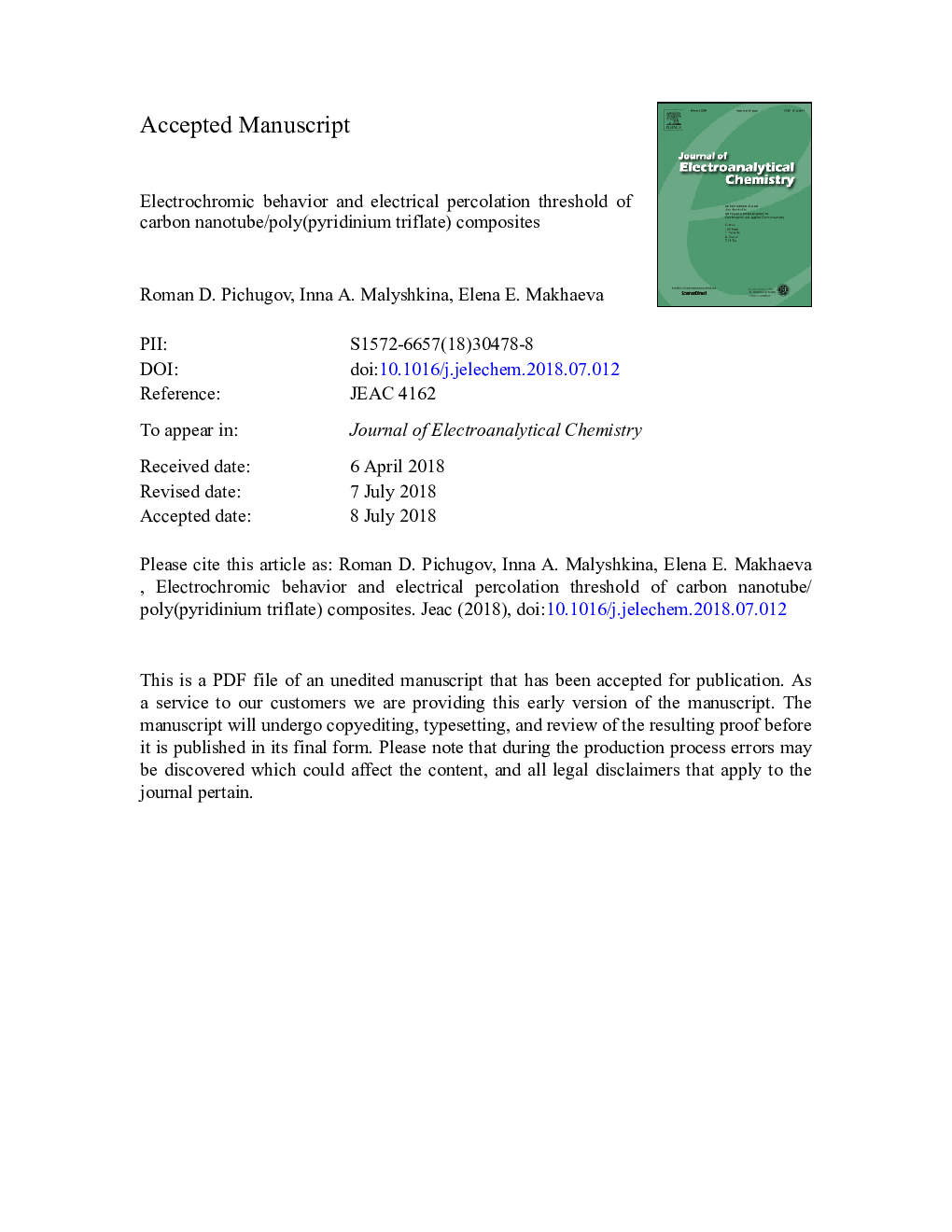| Article ID | Journal | Published Year | Pages | File Type |
|---|---|---|---|---|
| 6661663 | Journal of Electroanalytical Chemistry | 2018 | 26 Pages |
Abstract
The electrochromic composite material based on poly(4,4â²-(1,4-phenylene)bis(2,6-diphenylpyridinium) triflate) (PV) and multiwall carbon nanotubes (MWCNTs) was prepared by non-covalent interaction where PV acts as a functionalizing agent for MWCNTs. The increase in electrical conductivity and improvement of electrochromic properties of PV is attributed to the formation of MWCNTs networks. The percolation threshold for PV/MWCNTs occurred at 0.3â¯wt% of MWCNTs. Corresponding value of critical exponent was found to be 2.8 which is far from universal values. At practically the same electrochromic contrast the coloring and bleaching time for composites with higher polymer concentration (8â¯mg/mL) decreased from 600â¯ms to 300â¯ms and from 500â¯ms to 350â¯ms, respectively. It was demonstrated that further increase of MWCNTs weight content did not lead to the improvement of electrochromic properties.
Related Topics
Physical Sciences and Engineering
Chemical Engineering
Chemical Engineering (General)
Authors
Roman D. Pichugov, Inna A. Malyshkina, Elena E. Makhaeva,
